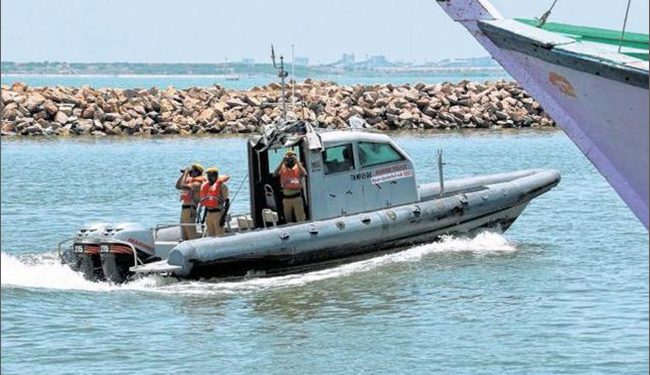Kendrapara: After the arrest of LeT handler Habibur Rahaman of Kendrapara by the NIA, questions did rounds about his network in the district and the threat of a possible attack on major coastal establishments.
The NIA (National Investigation Agency) Sunday arrested Habibur Rahaman alias Habib, a resident of Kendrapara, from Delhi’s Indira Gandhi Airport, while he was returning from Riyadh in Saudi Arabia.
He was a terrorist handler for the Pakistani-based Lashkar-e-Taiba and was one of the handlers of LeT terrorist Shaikh Abdul Naeem alias Nomi who was initially arrested in 2007 while trying to infiltrate two Pakistani and one Kashmiri terrorists into India through Bangladesh. He escaped in 2014 and was arrested November 2017.
Habibur Rahman arranged hideouts and funds for Shaikh Abdul Naeem on different occasions for carrying out terrorist activities in India as per the directions of LeT terrorist Amjad alias Rehan who is based in Pakistan. The NIA has charge-sheeted him and 10 others and issued an NBW.
There is every possibility that Habibur Rahman might have a network in native Kendrapara district. At present, it would be a cakewalk for any terrorist group to attack major establishments on the Orissa coast as the coast is not well protected.
As August 15 is round the corner there is every possibility that Habibur Rahman was to return to India to organise his aides for a terrorist attack in the country including the Orissa coast. The state has one of the largest coastlines stretching over 480 km.
The coastal districts of Orissa are more vulnerable to attacks from the sea as they house important defence establishments and monuments like Jagannath and Konark temples.
The defence units located here are the Integrated Test Range (ITR) at Chandipur, Proof and Experimental Establishment (PXE) and Military Engineering Services (MES) at Chandipur, Air Defence College at Gopalpur and Defence Radar Centres at Dhamra, Mahakalapada and Chandrabhaga and Gopalpur. These facilities are not adequately secured.
To restrict the entry of foreign nationals into Indian waters, security agencies like the Coast Guard, forest personnel and marine police are maintaining surveillance. But foreigners are still able to enter Indian waters violating the Maritime Zone of Indian (Regulation etc) Act, 1981.
The infiltration of illegal immigrants into Paradip and Kendrapara’s Mahakalapada continue unabated at regular intervals causing concern for security personnel. Foreign nationals from Myanmar, Bangladesh and Thailand regularly sneak in via sea. In August 2010, six Myanmar nationals, who sneaked into Paradip port via sea, were nabbed by CISF personnel while they were moving suspiciously near Gate No 1 of Paradip Port.
Similarly, seven Myanmar fishermen were arrested in July 2010 in Paradip while they were roaming in the Sandhakuda area without documents after locals informed Paradip marine police.
In 2008, 46 foreign nationals including Bangladeshis and Sri Lankans, were arrested for illegally entering Indian waters. The law enforcing department had also seized three vessels from them.
Although the 26/11 attack on Mumbai was an eye-opener for the state government, and it set up marine police stations, it has failed to fill the sanctioned strength in most marine police stations. It has failed to provide modern gadgets and seaworthy vessels to marine police to go into deep sea to check infiltration.
According to most Marine police officials, though the Centre has provided seaworthy vessels to some marine police stations, most marine police stations do not have seaworthy vessels. Most of the time they depend on the Coast Guard.
The coast of Kendrapara district witnesses the illegal influx of foreigners at regular intervals. Though three marine stations, Jamboo, Tantiapala and Talachau Marine PSes, have been operating in the district, except for Jamboo the other two stations do not have seaworthy vessels.
Though the sanctioned strength of the three marine police stations is 243, the three police stations operate with a strength much fewer than that. The manpower of the three police stations would be less than 40. Two out of three police stations lack infrastructure, seaworthy vessels and modern weapons. Most of the police personnel of marine police stations have not undergone coastal security training or have modern weapons to fight in the sea.
The condition of two marine police stations, Talachua and Tantiapala, is more vulnerable than Jamboo marine police station.
While the Talachua marine police station has been functioning with one ASI, two havildars and five constables, the Tantiapala marine police station is going on with one ASI, one havildar and seven constables.
Kendrapara SP Niti Sekhar admitted that staff shortage in marine police stations and lack of modern arms had hit coastal security. He said whenever required, armed policemen are sent from district headquarters for coastal security missions.
PNN






































